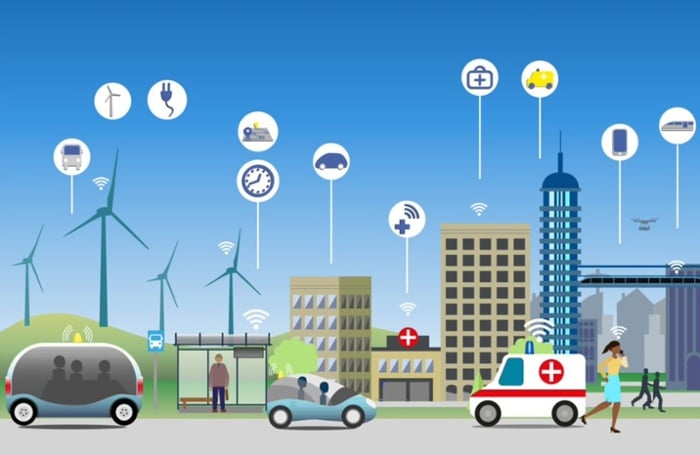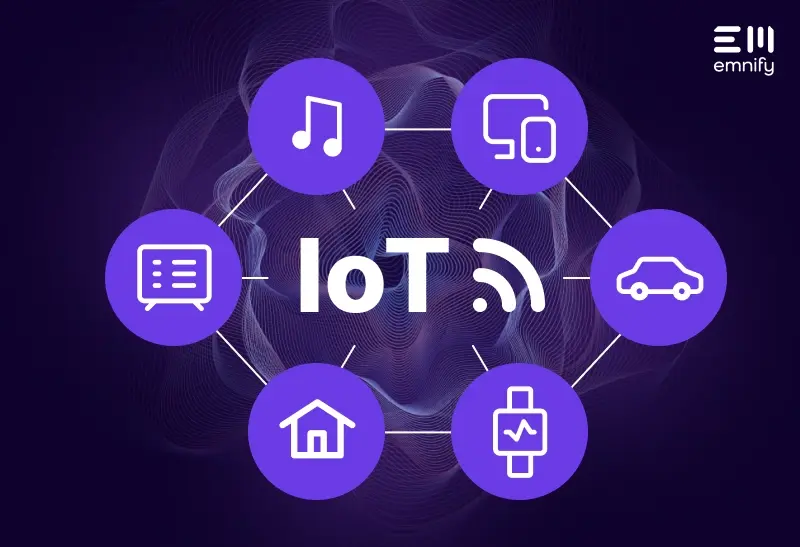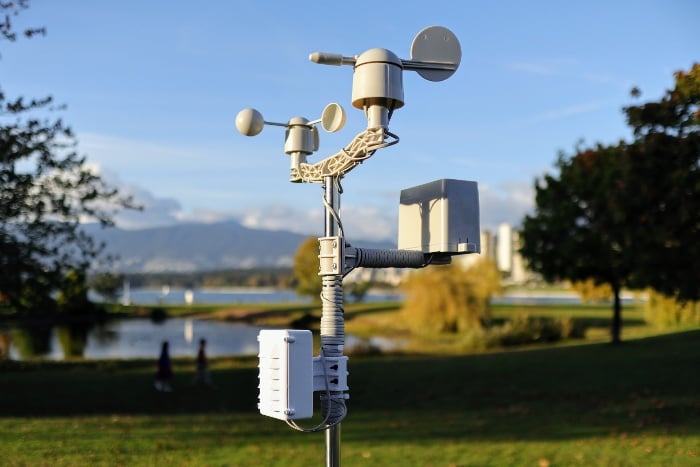

This matters to you because ...
Embracing the full potential of IoT hinges on reliable, uninterrupted connectivity—and traditional connectivity methods built for human communication just don’t cut it. Our globally distributed IoT SuperNetwork sets a new benchmark, offering reliability and scalability like never before.
In today’s 24/7 ‘always-on’ world, the immense power and purpose of IoT is transforming industries, driving innovation, and creating endless opportunities. Yet, the success of every IoT initiative hinges on one crucial factor: seamless, reliable connectivity.
Traditional mobile networks, designed primarily for human communication, often fall short in meeting the unique demands of IoT. IoT devices are not just about numbers--they are about vast fleets that need constant connection and remote management.
Every IoT device and use case comes with its own distinct blueprint of technical needs, commercial frameworks, and deployment nuances. Unlike mobile handsets, IoT devices are often deployed in large fleets or populations that must be kept online at all times and need to be actively managed—remotely. For IoT businesses to truly flourish, connectivity must be at the forefront of tech stack design considerations.
The emnify IoT SuperNetwork reimagines and rebuilds the core functions of traditional telecom networks in a cloud-native environment. emnify has constructed an architecture that is user-ready for global scale, bridging the gap between device connectivity and cloud services. For your enterprise, we’ve simplified the complex journey in-between, guaranteeing compliance, unwavering reliability, and unparalleled cost-effectiveness.
Pivoting to a future-ready network: The power of SDN & NFV
When it comes to networking, there’s a critical distinction that all forward-thinking businesses must understand: the separation of the control and forwarding planes. This separation is at the heart of Software Defined Networking (SDN), and embodies a concept that empowers businesses to control network traffic without the need to physically access the hardware.
But why does this matter?
SDN lays the foundation for a more flexible, adaptable, and cost-efficient network infrastructure. It enables businesses to respond swiftly to changing demands, without the cumbersome and expensive process of altering hardware. This agility is crucial in today’s fast-paced digital world, where the ability to adapt can be the difference between market leadership and obsolescence.
Even more transformative was the introduction of Network Functions Virtualization (NFV) in 2012. NFV took the principles of SDN and applied them to network functions–allowing tasks like routing, firewalling, and load balancing to be managed via software.
This shift from hardware-reliant solutions to software-defined capabilities was nothing short of revolutionary. Not only did it drastically reduce costs, but it also ushered in an era where innovation became rapid, unburdened by the traditional constraints of physical equipment. At emnify, we harnessed the power of SDN and NFV as an essential strategy—to make our customers competitive, agile, and responsive in a market that waits for no one.
Innovation through software agility
Adopting the NFV paradigm in 2014 was a strategic decision that reaped immediate benefits for emnify and our customers. Traditionally, hardware-driven approaches demand long innovation cycles, often extending to 18 months. In contrast, software can be refined, tested, and deployed in as little as six months, especially with tools like the Go programming language and eBPF for packet processing.
eBPF has also been a game-changer. While previous platforms were restricted to handling hundreds of megabits in throughput, eBPF-powered systems can manage tens of gigabits. With eBPF at its core, the emnify SuperNetwork platform offers features optimized for low latency, including firewalling, VPN connectivity, and the invaluable packet capture for troubleshooting—all seamlessly integrated, and underlining our commitment to our customers.
When emnify commits to a technology, it’s with our customers in mind, ensuring they benefit from every innovation, every adaptation, and every forward step we take.
Full ownership: In-house development and feedback cycle
Unlike many competitors in our industry who employ traditional models and methods, emnify operates with a clear distinction: we maintain complete in-house development and operation. At the time of writing this article in October 2023, approximately 45% of emnify’s 180 employees are part of the product and engineering teams.
This eliminates the common disconnect between software creation and operation seen in traditional models. By owning the entire process, from development to deployment, we ensure a direct feedback loop. This ownership allows us to control the SuperNetwork’s roadmap, aligning it with customer needs and market trends without external dependencies or delays.
We believe in giving power back to our customers. emnify ‘opens up’ what was once a closed network, providing our customers with the flexibility and control to configure and create their own private, virtual mobile network. This approach not only enhances adaptability but also ensures that our customers have the tools and control they need to succeed in their respective sectors.
Redefining SIM card functionality and data traffic processing
A pivotal part of our innovation lies in the reimagining of the SIM card. Our Multi-IMSI based system ensures that a single SIM card can possess multiple identities and is adaptable based on its deployment.
As we unbundled the SIM from a specific home operator network, our Multi-IMSI based SIM card can change its identity and configuration dynamically during its lifetime. This flexibility was highlighted during our recent launch in Brazil. Devices previously operating in Europe and the US can now seamlessly transition to our Brazilian network nodes, all while retaining their original configurations. This on-the-fly identity change, executed behind the scenes, ensures not only a smooth transition that goes unnoticed by our customers, but additionally guarantees full local regulatory compliance.
The flexible SIM configuration, in conjunction with our truly globally distributed core network infrastructure, gives our customers a frictionless experience when scaling IoT projects globally. We’ve strategically placed the packet processing nodes of our SuperNetwork around the world—dynamically selecting the best breakout point based on the device’s location and the specific requirements of the use case.
This intelligent decision-making process, which we’ve achieved patents for in over 30 countries, ensures optimal performance regardless of where a device is operating.
Multi-IMSI/Multi-tenant Home Location Register (HLR) and Home Subscriber Server (HSS)
As the first to construct a truly multi-tenant, multi-IMSI capable HLR and HSS, emnify has successfully unbundled a SIM card from a specific home operator. The HLR/HSS is the technical backbone, where SIM cards are managed in a 3GPP setup. The Multi-IMSI SIM card concept may not be novel in itself, but the traditional handling has been fragmented, with each HLR/HSS offering disparate features, possibly limited to only two IMSIs and usually connected through an intermediate roaming hub, limiting transparency.
emnify's innovation merges these diverse functionalities into a unified system. This integration means every IMSI, regardless of its origin, is managed uniformly, delivering a smooth and consistent experience for our customers, and further underscoring our dedication to crafting a cohesive IoT-optimized stack.
Unbundling the core network
Traditional core networks are optimized for consumer mobile use and tend to fall short when addressing the sensitivities of IoT use cases. It’s because of this that we made the decision to unbundle the core network from specific radio networks, overlaying them with a specialized core designed to optimize IoT connectivity.
This approach mirrors the 5G network slicing principle—segmenting a single physical network into multiple virtual networks—creates an environment tailored for IoT devices, distinct from networks designed for human use. For IoT devices, it means more efficient data handling, reduced latency, and tailored security measures.
Versatility in cloud integration for an IoT-optimized stack
Our platform’s architecture is designed for adaptability and operates seamlessly across both public and private cloud environments. While we maintain a deep and long-standing relationship with AWS, which has been instrumental in our global expansion, our platform is not confined to a single provider. This means that we can be agile, adaptable and ready to serve our customers, irrespective of their cloud preference.
emnify has moved past the limitations of traditional hardware and server dependencies. Of course we harness the efficiency of serverless offerings, allowing us to allocate resources dynamically, we are not bound by them. Our system can upscale or downscale based on demand showcasing the robustness of a cloud-agnostic strategy.
While many of our operations benefit from serverless options, we know there is a need for virtual machines in specific use cases, particularly where low-level functionalities are essential.
As our partner, AWS has provided tools like Redshift, a cloud-based scalable data warehouse, but our focus remains on dedicating resources to what truly differentiates emnify, creating speed and control when serving our customers.
The importance of elasticity
IoT businesses often need the flexibility to scale both up and down. For instance, certain sectors, like agriculture, experience seasonal demands. During off-peak seasons, devices and SIM cards can be deactivated, leading to reduced operational costs. When the peak season arrives, these devices can be reactivated.
This dynamic scaling is crucial, especially when considering huge industries requiring software updates, like the automotive industry. A large, modern car brand needs to update the software of millions of cars simultaneously. Traditional infrastructure designs might require significant upfront investments to handle such demands, but at emnify, our OPEX model allows us to dynamically source resources from our cloud providers, ensuring that businesses pay only for what they need.
The SuperNetwork architecture is designed to monitor its own metrics and scale up automatically, ensuring a seamless experience for our customers. Traditional operators might impose capacity limits, but at emnify, we prioritize our customer’s needs. Whether we are updating a thousand cars or one million, our system is equipped to handle this demand without requiring customers to make significant upfront payments or wait for additional capacity provisioning.
Optimized abstraction: Merging flexibility with compliance
Our abstraction layer separates endpoint configurations from SIM card identities. This means that while the credentials on a SIM card can be altered at any time, the core configurations remain untouched. Imagine the breadth of devices, each with distinct requirements, dispersed globally. Now, factor in the variability of local radio network environments and regulations. It’s a daunting mosaic that calls for both flexibility and uniformity; and emnify has it all.
Let’s take our earlier case: Brazil. Typical industry practices in Brazil often involves partnering with local providers to achieve ‘localization,’—resulting in an inconsistent experience. emnify ensures a consistent and unified approach regardless of the region. Our customers enjoy the same features and integrations, irrespective of their geographical deployment, all while continuously remaining compliant with local regulations, like Brazil’s restrictions on permanent roaming.
Instead of managing SIM cards, our customers manage network endpoints. This abstraction allows us to separate the endpoint configuration and properties from the data transport method. We've designed our system to be agnostic to the underlying technology, be it LoRA, Starlink, or future innovations that have yet to be developed.
Optimizing the future: MQTT brokers and edge computing
At emnify, our tech stack’s evolution never rests. We’re taking significant strides in cloud integration, notably with our upcoming enhancements like the advanced MQTT broker and proxy functionality. This change shifts the device identity responsibility from the customer’s end to the cloud, streamlining the process and enhancing security. For constrained devices with limited processing, this means offloading the heavy lifting to our intelligent network, ensuring optimal performance.
This, in combination with our future edge computing capabilities, will propel IoT connectivity to new levels of reliability and quality of service. While our distributed SuperNetwork is already a strong asset, edge computing will allow data processing closer to the source, ensuring reduced latency and increased efficiency.
With this, customers can upload backend code on-the-fly, and automatically let the ‘intelligent’ network run itself in close proximity to our customers’ devices, reinforcing both reliability and data integrity. As emnify explores and navigates the IoT landscape, these innovations underscore our commitment to continuously optimizing our stack for your future success.
Concluding thoughts
There is a pressing need for a seismic shift in how businesses think about IoT connectivity. One-size-fits all strategies are antiquated: There is no room for half measures now. Every moment your IoT device is offline, disconnected, or lagging, you are losing data, business and customer trust. With emnify's forward-thinking architecture and our globally distributed SuperNetwork, we’re taking reliability, scalability, and user-friendliness to unprecedented heights.
My recommendation? Integrate this advanced solution early-on in your business’s next-generation IoT initiatives. By doing so, you will preempt numerous challenges, and allow you to concentrate on maximizing your business potential.
In the meantime, connecting with me on LinkedIn isn’t just a click—it’s an open invitation to discuss, challenge, and discover the boundless possibilities of IoT, together. As you plan your next-gen IoT projects, considering our innovative architecture early on could be a key to overcoming hurdles and excel in achieving your business objectives.
Reach out to me, and let’s explore the future of IoT connectivity together.
Experience the power of the emnify IoT SuperNetwork
Every IoT use case is different, ranging from simple setups to complex global deployments. emnify offers flexible and scalable solutions that fit your needs.
Let's talk to discover how your business can leverage the power of the emnify IoT SuperNetwork.

Frank Stoecker is CEO and co-founder of emnify. A successful serial entrepreneur and recognized telecoms expert for over 15 years, Frank anticipated early that the new wave of connected services demanded new concepts to simplify connectivity on a global scale. Prior to co-founding emnify, Frank held leadership positions at MACH and Syniverse.


